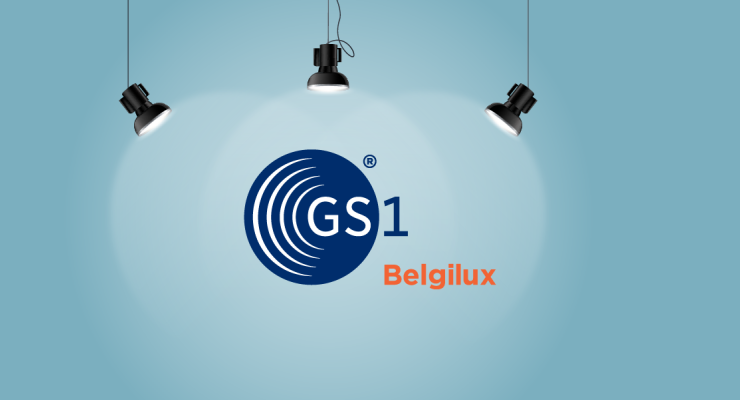
Flanders itself now also working on outgoing electronic invoicing
Since 2017, companies have been obliged to send their invoices to the Flemish authorities in Belgium using Peppol. The department of Finances and Budget (FB) aims to fully embrace e-invoicing by soon expanding the sending of e-invoices through Peppol. Besides issuing ordinary invoices, the department also wishes to use the new type 102 charges. We discussed the new e-invoicing process with Ann Podevin from the Flemish Government, who is overseeing this entire project.
Our dialogue partner
Ann Podevin is the head of the “Debtors, Accounts Book and Beneficiary Management” department within the Accounting Services Centre of the FB Department. The Accounting Services Centre (DCB) facilitates the OraFin accounting system for entities of the Flemish Government. In this sense, its service supports all bodies with all manner of accounting issues concerning debtors, accounts book and beneficiary management. The Accounting services centre also sees to payments, VAT declarations, tax sheets and annual accounts, and verifies all accounting transactions. It furthermore sends out sales invoices through the various platforms such as Mercurius (Peppol), eBox or, as a final resort, by post.

Charges through Peppol
For a long time, authorities have been unable to issue many invoices through Peppol, as no specific document type had been provided for charges. This is because only a number of document types are available for commercial invoices, to which a purchase order is also linked; usually the most common document type 380. However, there is no purchase order for a charge, since there has been no interaction with a client. “This is because charges have a statutory basis, such as a decree or a decision”, Ann explains. “This is specifically down to how an authority operates.” This means that for the Flemish Government, it was important that a distinction could be made in Peppol between commercial invoices and a charge. Although various types are already recognised internationally, no standard had yet been provided for charges that was supported by Peppol. Document type 102 from code table UNCL1001 was therefore added to Peppol.

At present, charges are still being sent through type 380, as commercial invoices. The downside to this is that companies/authorities expect a purchase order to be stated for this. This means we are unable to issue a large share of our charges to our clients electronically, and are currently sending these out on paper. By introducing type 102, specifically provided among other things for charges, the majority of invoices can now be sent out through Peppol. This will, in the first instance, primarily be to government clients, since they are obliged to receive e-invoices.
Why choose Peppol?
“The benefits of Peppol are innumerable”, says Ann. “It is first and foremost based on a European standard – EN 16931 – meaning we’re also able to send and receive to and from abroad.” Clients receive their invoice in a structured format, after which that is automatically recorded in the accounting system. This requires less manual work, thus leading to fewer errors. Moreover, the sender can receive feedback concerning the invoice, such as whether the client has received it properly. Lastly, there’s no longer any paper flow, with much fewer manual administrative actions required.

Using GLN
Processing invoices in a decentralised manner poses the challenge of finding a way of getting the invoices to the right entity, so that the entity is able to approve the invoice so as to then pay on time. This is a problem if invoices are issued to a Crossroads Bank for Enterprises number, since dozens of entities operate under this same number. This makes it important that the sub-entity – such as department or agency – is also stated. To do so at present, it is examined whether the GLN could be eligible as a possible solution. Using a GLN means both the sender and recipient can be identified clearly, given that the sub-entity can thus be identified in a unique manner.
The Flemish Government normally operates with an OVO code for identifying the various Flemish institutions. Since this number cannot be used in Peppol, these OVO codes would be linked to a GLN, just as retailers identify their outlets with the GLN, for instance. That way, these institutions can also be identified worldwide in Peppol, for example. This is a trail set to be further explored in the months to come.
Collaboration with GS1
“GS1 Belgium & Luxembourg is a kind of knowledge centre, as far as we're concerned”, Ann concludes, “by keeping us up to date on new developments and opportunities. Moreover, GS1 offers specific training on Peppol. Lastly, GS1 Belgilux advises and guides us in the event of issues, such as with the new 102 type that had to be added into the Peppol standard, to be able to actually start sending our charges electronically.”
Next stages
“When it comes to e-invoicing, as the Flemish Government we are leading the way in Belgium”, Says Ann proudly. “The next challenge is going to be familiarising the entities with the new type.” “We hope to have this project completed by the end of 2022. We are currently still analysing which fields of charges we need to be processing in our accounting system, and how this information can then be sent out to government institutions and companies.” We're aiming to involve as many other Flemish institutions as possible. This is because for Flanders, this might concern a few tens of thousands of documents, such as fines, fees and tax demands.
“In an initial stage, we’re set to start invoicing electronically between the various Flemish institutions. We're also bearing in mind that e-invoicing will also be mandatory in a B2B environment within the foreseeable future. This is why the system is without a doubt also future proof. Within the scope of this future obligation, this is certain to be further extended to companies in the longer term.



